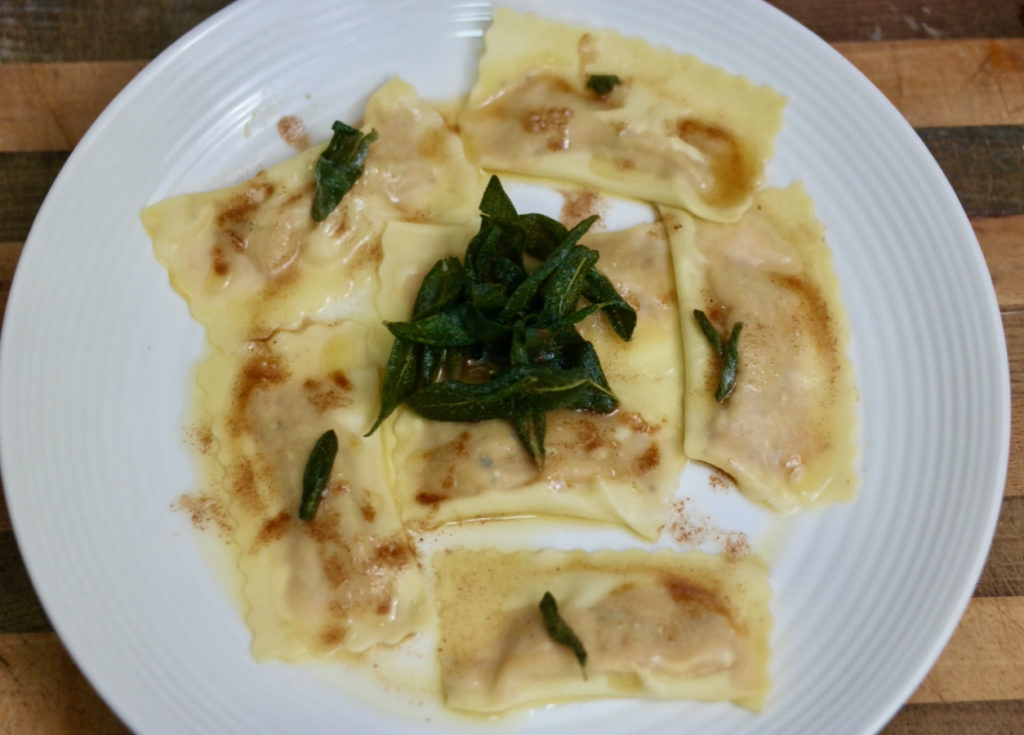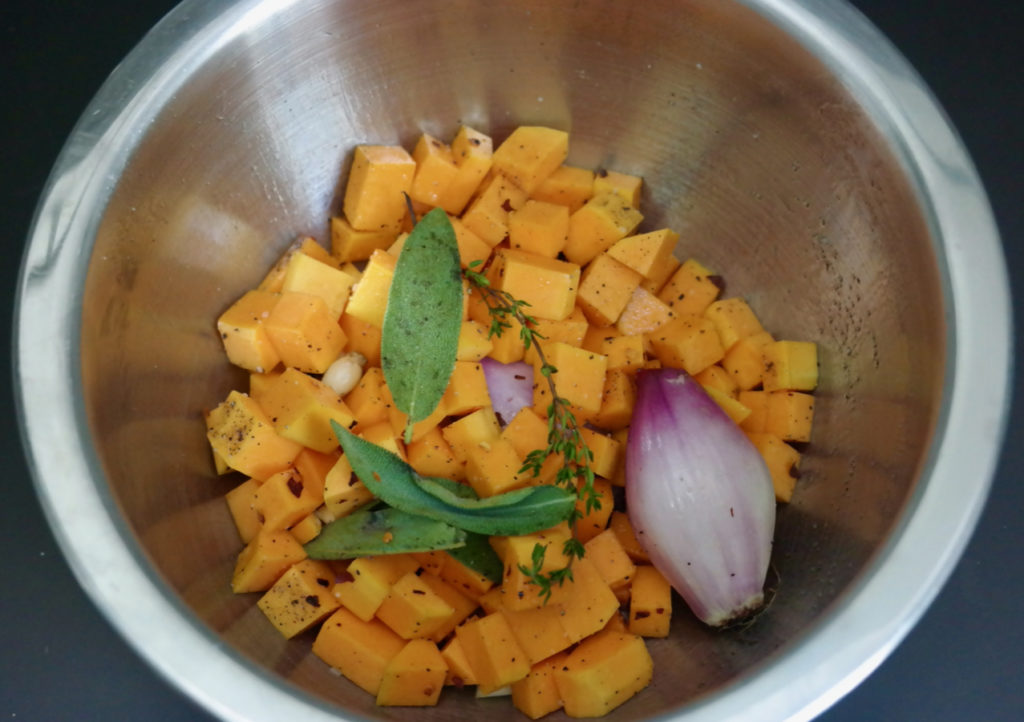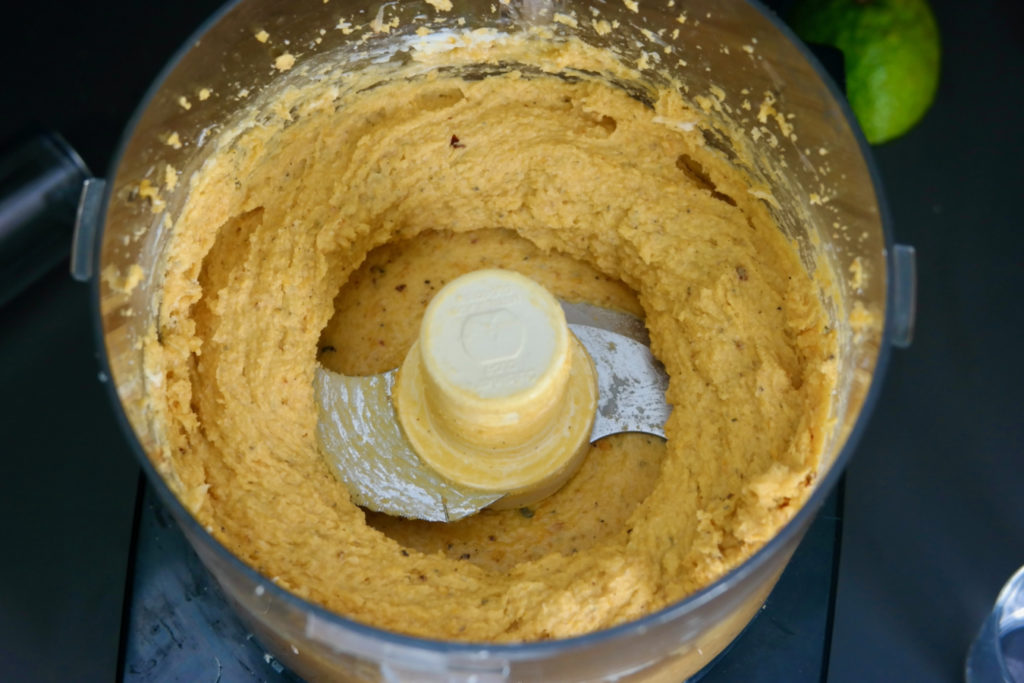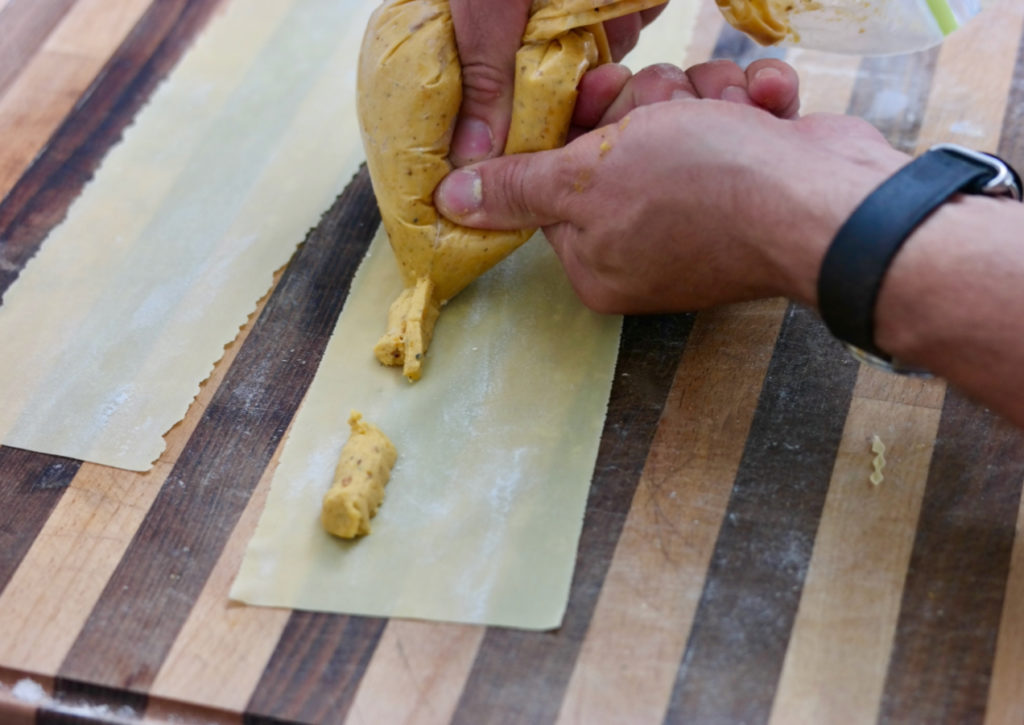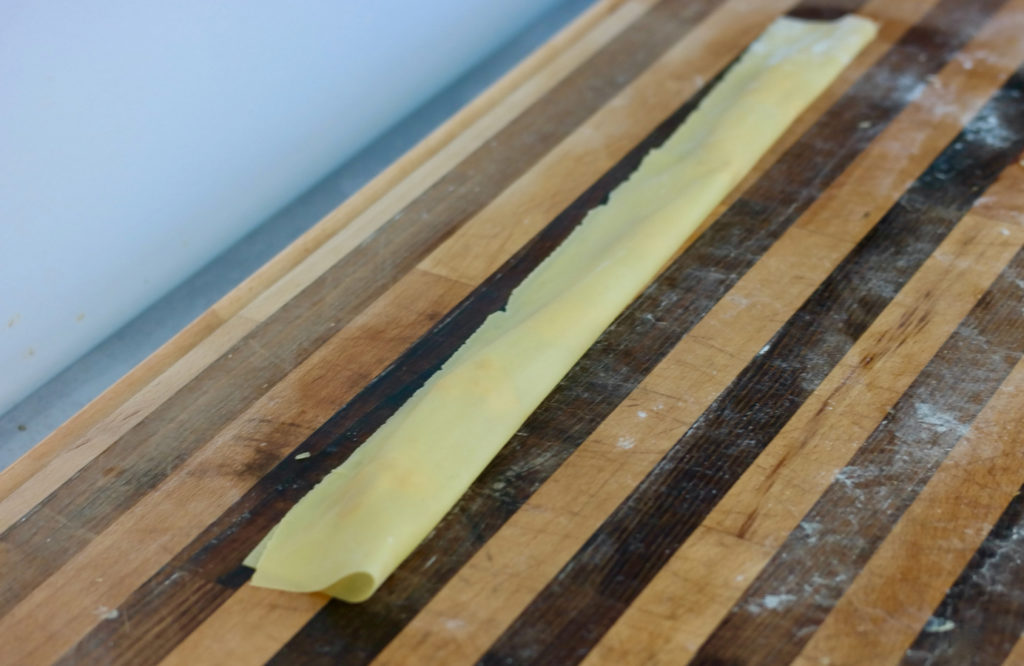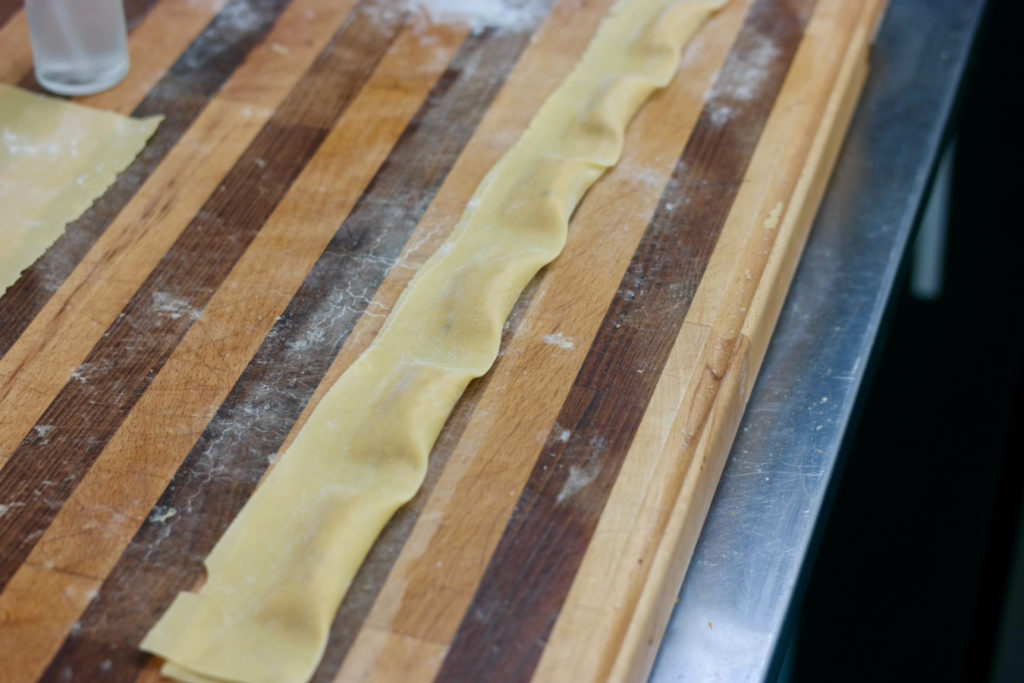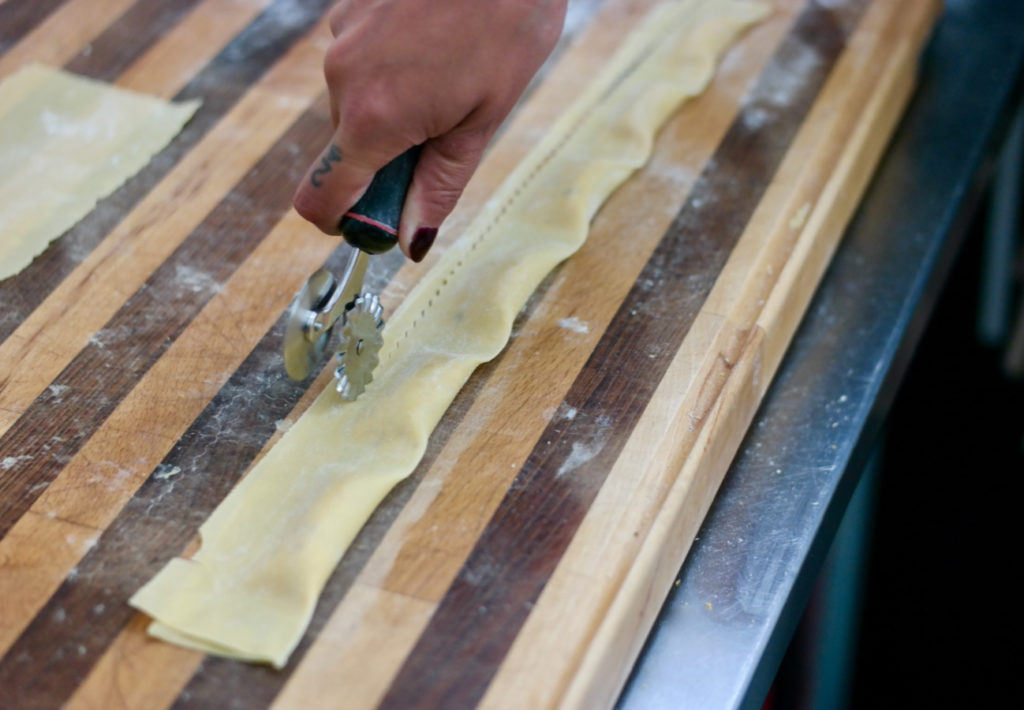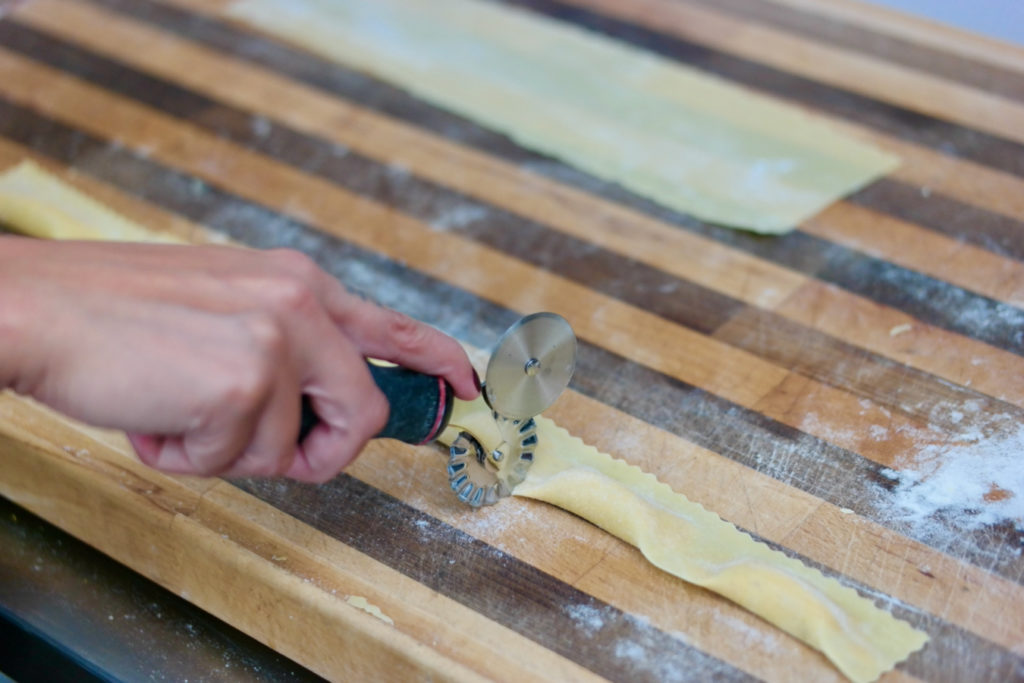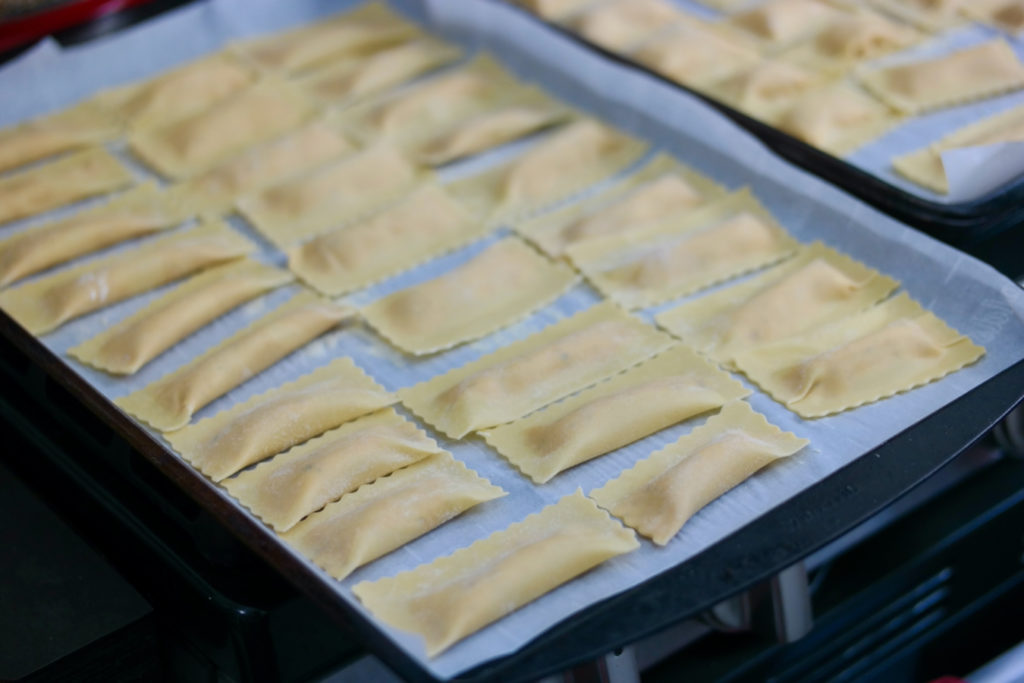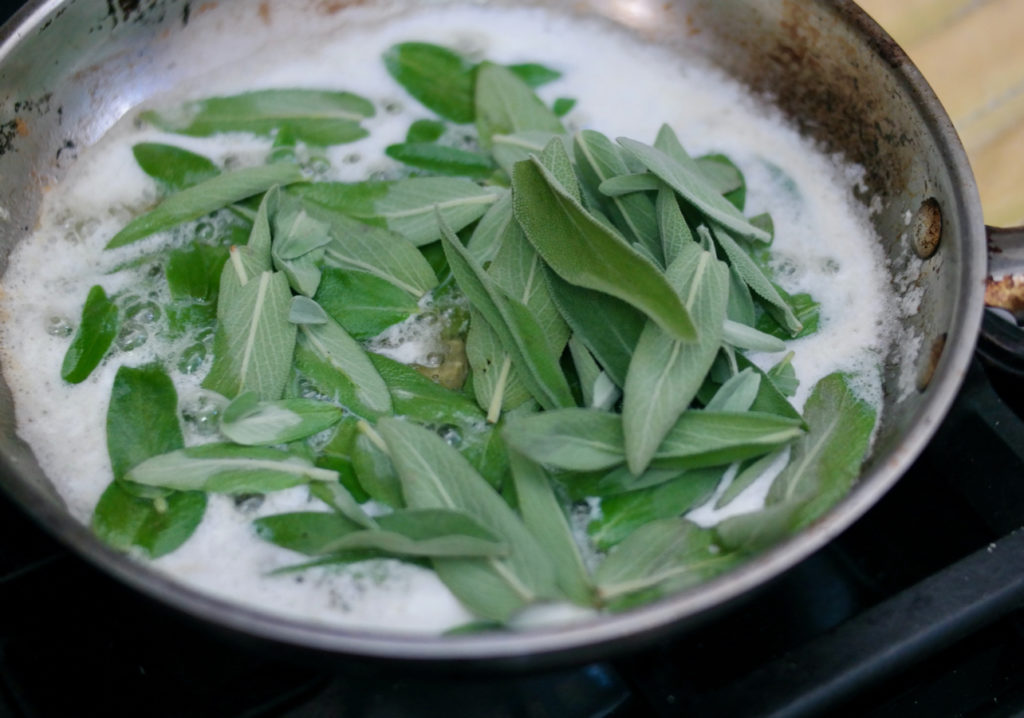We had a pretty busy May and June, so our newfound pasta-making hobby had to take a back seat for a while. But this summer we’re committed to picking that back up, and so we’ve recently moved to a new class of pastas: filled shapes, stuffed with interesting cheese and vegetable combinations. Our first venture was agnolotti, which are square, filled pastas from the northern Piedmont region of Italy. We decided to make ours with a rich butternut squash filling, which resulted in a tasty and colorful agnolotti. Now we’ll show you how to make this pasta from scratch, from dough to finished product.
You’ll need:
- 00 flour
- 5 eggs
- Semolina flour
- A bundle of sage
- A small butternut squash
- A shallot
- Olive oil
- Red pepper flakes
- Garlic
- Thyme
- Mascarpone cheese
- Parmesan cheese
- A lime
- 1 1/2 sticks of butter
You’ll first want to make your filling (or you can do this step while your dough is resting, after you knead it but before you roll it out). Peel your butternut squash, scoop out all the seeds and pulp, and cut it into 1/2-inch cubes. Also peel your shallot and 2 garlic cloves and add them to a bowl with the squash, 2 sprigs of thyme, and 4 sage leaves. Mix everything with 3 tablespoons of olive oil, a sprinkling of red pepper flakes, and salt and pepper.
Spread these veggies out on a baking sheet and place in the oven at 425°F for 35 minutes, until the squash is very soft. Then take out the thyme sprigs and transfer everything else to a food processor, along with 2 tablespoons of mascarpone cheese, 2 tablespoons of Parmesan cheese, and the juice from half your lime. Puree everything together until you have an even mixture.
Now to make and roll out your pasta dough, follow the first three steps here – except that when you get to the 6 setting on your pasta roller, send the dough through twice. Then lay each sheet of pasta on parchment paper dusted with more 00 flour, and sprinkle the top of each sheet with 00 flour as well. Cut each sheet in half and lay them on a work surface. Scoop your squash filling into a gallon-sized plastic zipper bag, seal it closed, and cut a 1/2-inch slit in one of the bottom corners of the bag to make yourself a homemade piping bag. Press all the filling to the bottom of the bag, then starting 1 inch from the end of your dough sheet, squeeze out lines of filling onto your dough that are 2 inches long and 1 inch apart, and 1/2 inch from the top of the dough sheet. Continue along until you get to the end of the dough sheet.
Use a spray bottle to light spritz the dough sheet, then fold it in half, over top of your filling …
… and use your fingers to press down in between each length of filling, so you’ve sectioned it off into individual pieces.
Take a fluted pastry cutter and trim off the bottom of your dough sheet.
Use it again to cut in between each filling, so you have separate pieces of agnolotto.
Then lay the agnolotti in a single layer onto baking sheets that have been lined with parchment paper dusted with semolina flour. Let them chill in the fridge for an hour.
When you’re ready to eat the agnolotti, bring a pot of salted water to a boil, then add in the agnolotti. Bring the water down to a simmer and cook for 3 minutes, until the outside edges of each piece are tender.
While you’re waiting for the water to boil, place the butter into a large pan and melt over medium-high heat until it starts to foam, after about 4 minutes. Add a large handful of sage leaves and cook for another 2 minutes, until the butter starts to brown in the pan but not burn.
Use a spider strainer to scoop the agnolotti out of the water and place into the butter, then gently stir everything around so the butter coats each agnolotto. Take your pan off the heat, scoop out agnolotti onto plates, and top with some sage leaves.
We were a little worried when we started this adventure that making agnolotti would be difficult, but that turned out not to be the case. The filling was just a matter of chopping, cooking and pureeing some vegetables, and shaping the pasta was fairly easy: if you can pipe, fold, press, and use a pastry cutter, you’re good to go! As well, the brown butter and sage paired nicely with the herbed squash filling, and we felt so accomplished making this cool pasta entirely on our own. This recipe makes a huge batch of agnolotti, so you’ll have plenty to share and eat up after all your efforts.
